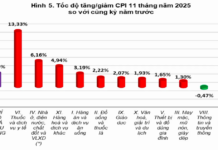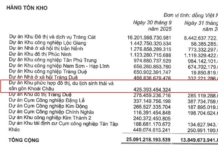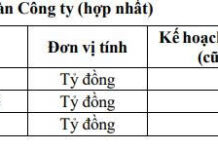
An illustration
The Ministry of Construction has recently issued a circular on the numbering and signage of houses and construction works, which will come into effect on October 15, 2024, replacing Decision 05/2006 that has been in operation for 18 years.
The Ministry also requires that house numbering facilitates civil and commercial transactions, information reception, and communication. It should also ensure integration and connectivity with the national database on population and land. The numbering direction of roads and streets that have been numbered before the circular takes effect remains unchanged.
The new circular specifically mentions different types of houses, including those on main roads, alleys, and cul-de-sacs, instead of grouping them together as in the previous regulations. It also adds provisions for numbering groups of houses and houses in industrial park projects.
For
houses on main roads or streets
, the numbering principle follows the order of 1, 2, 3… Houses on the left side take odd numbers (1, 3, 5…), while those on the right take even numbers (2, 4, 6…). The numbering direction goes from north to south, east to west, northeast to southwest, and southeast to northwest. This principle is also applied in the current law.
The new regulation
includes cases of houses with two fronts
, with the numbering principle following the wider road with a cross-section. If the two roads are of equal width, the numbering follows the road with the main entrance to the house or the road that has been continuously numbered. For roads or streets with vacant land and no continuous construction, the People’s Committee at the district level establishes a reserve of house numbers based on the approved detailed construction planning.
The principle of inserting house numbers for
newly built houses between two existing ones
is to add capital letters or natural numbers to the smaller number of the adjacent house. For example, a house built between numbers 20 and 22 will be numbered 20A, 20B, 20C…, or 20-1, 20-2, 20-3…
For
houses in unnamed alleys
, the naming principle follows the number of the house on the main road or street immediately before the alley (according to the smaller number). For alleys connecting two named roads or streets, the numbering direction starts from the house at the beginning of the alley, closest to the road from which the alley takes its name. If the alley connects two unnamed roads or streets, the direction of numbering starts from the house at the beginning of the alley, closest to the wider road.
Similarly, for
houses in unnamed cul-de-sacs
, the numbering principle follows the number of the house at the beginning of the alley, closest to the main road or street (according to the smaller number). If the cul-de-sac connects two alleys, the numbering direction starts from the house at the beginning of the cul-de-sac, taking its name from the first alley.
For
groups of houses with intersecting paths that cannot be named
, the naming principle follows the order of A, B, C, starting from the group of houses closest to the entrance of the area and moving towards the end. If the group of houses is on both sides of an internal road, the left side takes the names A, C, E, G, I…, while the right side takes B, D, F, H, K… For each house within a group, the principle is to take the combined name of the group with the house number (e.g., A10, B15, C4…) or the abbreviation of the road name, the group name, and the house number (for example, on Bang Lang Street: BL.A-10).
For
houses in industrial park projects
, the numbering principle within the project follows the regulations for houses on main roads or streets and groups of houses. If the land lot has multiple houses, factories, or functional works, the numbering follows the symbols on the 1/500 detailed planning drawing or natural numbers associated with the adjacent road.
What Did the Ministry of Construction Report to the Prime Minister About the 1 Million Social Houses?
According to the Ministry of Construction, the number of social housing units completed from 2021 to the present (as of the end of August 2024) falls significantly short of the government’s target in the project to build 1 million social housing units, with only 428,000 units completed during the 2021-2025 period.
The Cement Corporation of Vietnam: A Troubled Enterprise
The Vietnam Cement Industry Corporation (VICEM), a state-owned enterprise under the Ministry of Construction, reported a loss of 863 billion VND in the first six months of the year.












































